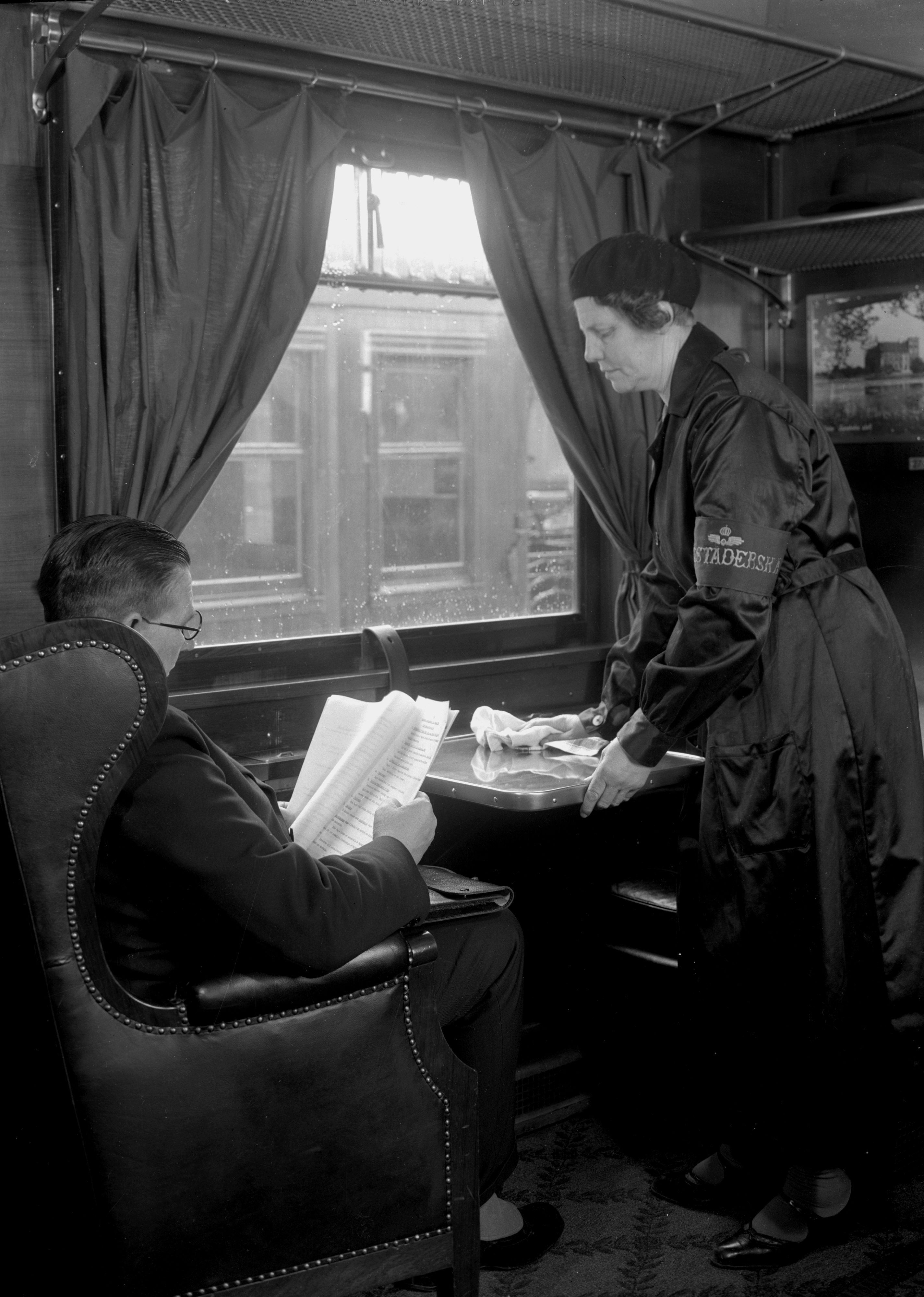Train maid
The train maid was an employee of the traffic department. Her immediate superior was the station master where she was stationed.
While working on a train, the on-board train supervisor was her immediate superior. According to the train maid instructions from 1943, each train maid was carry the standard equipment as determined by the railway board:
- 1 storage bag
- 1 metal carry container
- 1 pair of tongs
- 1 scraper
- 1 mug
- 20 ball discs
- 2 towels
- 6 drying cloths
- 1 cloth bag with 2 compartments
- 1 dustpan
- 1 hand broom
- a number of paper bags with handles
- 1 door key (to passenger carriage)
- 1 water bottle (in the summer, with suitable spout for refilling water)
The cloth bag was used to store the dustpan and hand broom. The metal carry container was used to store the tools used to clean the toilets, such as mug, scraper and tongs.
Neat and tidy
By making frequent rounds of the passenger carriages, the train maid ensured that “cleaning and polishing are satisfactory”. She made sure that compartments, corridors, vestibules and toilets were always neat and tidy. Tables, window frames, door handles, handrails, leather-clad bench seats and chairs also had to be wiped off. She emptied ashtrays and swept rubbish from the floors and rugs. The toilets had to be kept clean, especially the so-called toilet funnels. It was also her job to ensure that the carafes were filled with fresh water, especially during the summer.
The train maid also made up the beds in the sleeper and medical carriages according to the instructions of the on-board train supervisor. In the sleeping compartment, she did not just make the beds. She also had to make sure the safety strap of the upper berth was hooked into place, pull down the roller blind, close the curtains, and leave towels on the pillow.
On the train
The train made travelled on the train and, according to the instructions, was to “be in constant motion and, as far as possible, carry out cleaning of the compartments (sections) when the passengers have left them”.
In addition to her cleaning duties, the train made had to know the line and timetable she was working on in order to answer passenger questions.
